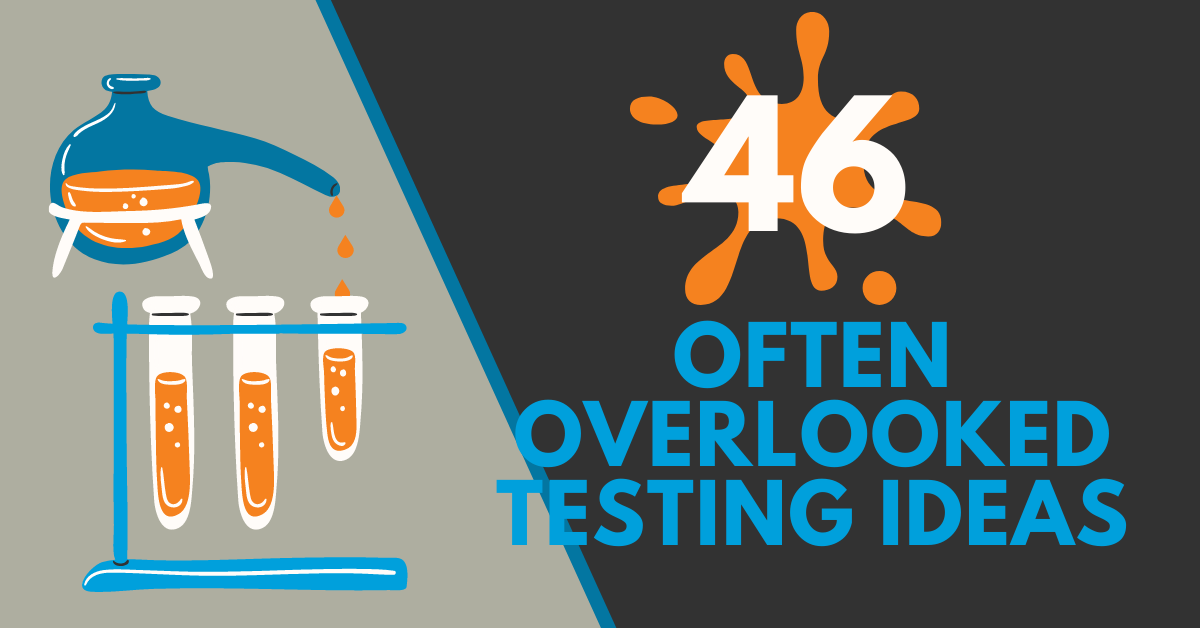
Testing is the most powerful tool we have to build a data-driven program. It’s what takes us from guesstimation to fact—from “this is how we’ve always done it” to “this is how we should be doing it.” But only if it’s done right. A bad test isn’t just a waste of resources—if it leads you down the wrong path, it’s worse than no test at all.
To get the most of your tests, make sure that you always have a plan, a hypothesis, and separately tracked control and test groups so that you can properly read the results. Use our audience panel size calculator and statistical significance calculator to ensure your results are meaningful. Once you understand your hypothesis and what success will look like, you're ready to start testing!
Not sure where to begin? Here are 46 impactful yet often overlooked online fundraising and engagement testing ideas:
Email “envelope” testing ideas
The way your email looks when it lands in a recipient's inbox has a huge impact on the number of people who will open it. This includes the name and format of the email sender name, the subject line, and the snippet of the email content that many email programs provide.
- Org + signer name vs. just signer name as an email sender
- “Your Organization’s Name” vs “Firstname Lastname, Your Organization’s Name” vs “Firstname Lastname”
- Pre-header vs. blank pre-header
- Include sample screenshot
- Emoji in subject line
- Campaign-specific sender name
- “2XMATCH” or “MatchChallenge@Organization.org” vs default sender
- Unfinished subject line
- Personalization
- First name, geography…
Email copy testing ideas
Once your email is opened, you’ve got to move your recipient to action. There’s plenty to test in email content and personalization.
- Overall message length (short vs. long)
- Formatting of the call-to-action language
- Highlighted, increased font size, link color, addition/removal of link underlining
- Personalization in email copy
- Name in addition to Salutation, Zip/City/State, reference to specific past actions (pledge actions taken, giving history)
- Headshot vs. no headshot in the signoff
- Copywriting style
- Personal story vs. campaign based/tactical
Email design testing ideas
The format, design, visuals, and imagery all play an important part in conversion to action.
- Plain text/“un-designed” format vs. typical design
- Images
- Happy vs. sad imagery, action vs. portraits, black & white vs. full color, demographics of subjects
- Image placement in the message (header vs. center call-out box)
- Use of animation
- Campaign thermometers, scrolling slides to use multiple images/sets of text, actively highlighting a call to action through animation
- “Invoice style” reminder messaging
Web testing ideas
While we focus a lot of testing in email, we know that web properties can drive a significant amount (oftentimes the majority) of fundraising revenue.
- “Organic” donations
- Size, color, and placement of donate buttons; use of interstitial pages; widgets integrated passively on web pages
- Lightboxes
- Length of copy, images, size, shape
- Social proof
- A scrolling list of recent donors with messaging like, “Most supporters give $XX”
- Engagement devices with back-end ask
- Quiz, survey, pledge page/advocacy action
If you’ve made it this far, it’s clear you’re very interested in A/B testing. Why don’t you go ahead and check out some of other MWD testing blog posts:
- OPTIMIZING YOUR ORGANIZATION’S DONATION PAGE: A PRIMER – Katie Dunne & Stephanie Drahan
- THE TEST QUEST: OPTIMIZING YOUR DONORS’ JOURNEY – Jack Valor & Nick Garcia
- IMPROVE YEAR-END GIVING BY OPTIMIZING YOUR WEBSITE DONATION PAGES – Dawn Stoner
![[ Facebook ]](/img/connect-facebook.png)
![[ Twitter ]](/img/connect-twitter.png)